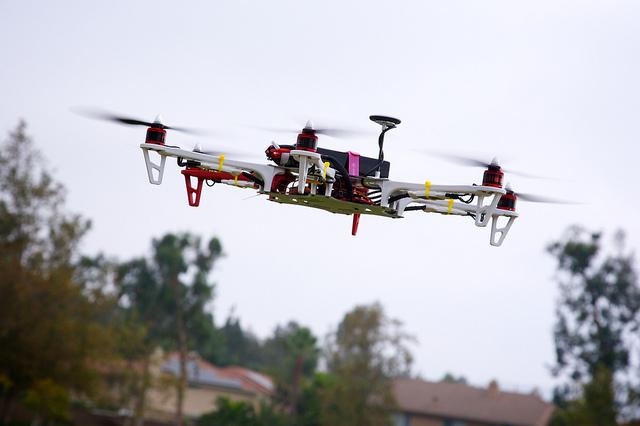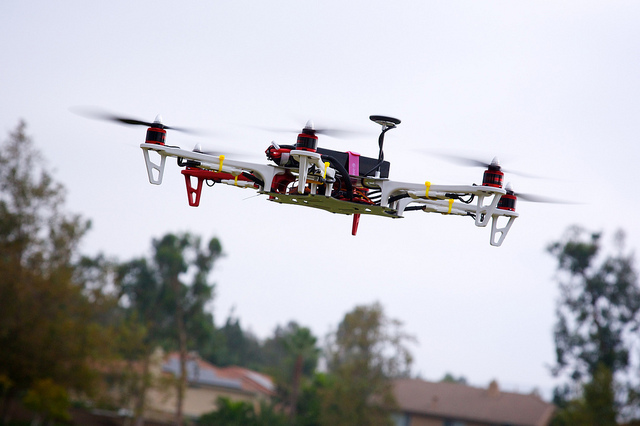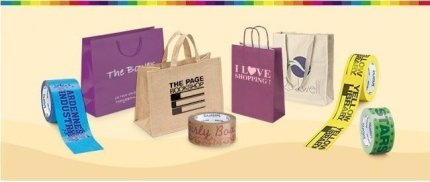The world of technology is moving at an unbelievable rate and it is quite possible that the world in 2030 will be completely unrecognisable from the one we live in today.
A major part of that change will be the way that people purchase and receive items from online retailers. According to Digitalmarketingshow.co.uk, UK shoppers are expected to have spent around £52 billion online by the end of the year. With so many people deciding to shop online instead of at their local supermarket, packaging and delivery will become more important than ever before.
By the time 2030 comes along, packaging and delivery could have been taken into a whole new sector. With information so readily available at the click of a button on the internet, it can only be a matter of time before the consumers start to demand that their products reach them a lot sooner too. Time spent waiting will be a commodity that we’re just not prepared to spend.
One very interesting piece of technology that will be common place by 2030, is the use of drones for delivery. These automated robots will be programmed to fly to an exact destination and back again, meaning that delivery people in vans may be a thing of the past for smaller items.
Drone girl looks into a delivery drone future
We had a few questions to ask about drones; most notably about security and how the strength and design of our packaging would have to change to meet the demands of this new form of delivery. So we got together with Sally French, who you may know better as thedronegirl.com. She has run the web’s most visited site solely about drones since 2013 and was named by Fortune Magazine as one of 2015’s ‘Most Influential Women in Drones’.
We quizzed her on a few different issues surrounding delivery, branding and the changes that we will have to make to our personal lives in order to fulfil the potential of drone deliveries.
Rajapack: Hi Sally, thanks for speaking with us today. First of all, do you think that most companies will follow Amazon’s lead (Amazon’s CEO says that their drone deliveries will reach customers within 30 minutes) in drone deliveries over the next fifteen years?
SF: To be quite honest, many companies are beating Amazon in drone deliveries. While they are definitely testing them, as far as I’m aware, Amazon hasn’t performed a public delivery. But we’ve already seen numerous successful deliveries. Some are silly, like the Tacocopter (a drone designed specifically to deliver Tacos in the US). Some are illegal, for example, drug smuggling. Some are utilitarian; Finland’s postal service was just in the news for doing deliveries by drone. Some are incredibly life-changing, such as the companies delivering medication to hard-to-reach areas.
Rajapack: With so much variety already on the drone market, will everything be delivered by drone in 2030? Presumably there will be a limit to the size and weight that drones will ever be able to carry…it’s not like we’ll be seeing fridges flying through the sky?
SF: Of course, flight time and payload is limited, but as the technology improves, so will payload capacities and flight times.
Rajapack: In 2030, is the sky going to be full of drones? With so many drones flying through the air, could there be a problem for flight paths?
SF: Yes, absolutely. We’ll need some type of air traffic control system. NASA has done work on that, as well as a few others.
Rajapack: So will the drones have sensor technology to stop them colliding in mid-air, or hitting other objects?
SF: Yes, sense-and-avoid technology is really the Holy Grail in drone delivery. There are currently varying degrees of that technology on the market already.
Rajapack: Won’t we lose some security peace of mind with unmanned deliveries? How can we guarantee the safety of important products such as medical supplies if they’re delivered by drones?
SF: I don’t view a drone as any less safe than a regular car delivery. People ask, “what if someone sees the drone and steals your package off your porch?” But they could easily do that with a UPS truck too.
Rajapack: Will drone deliveries change the way we receive products? Do you think we will have to adapt our homes to include boxes/ safes where we could receive drone deliveries?
SF: I wouldn’t think so. People do have mailboxes to keep letters secure, but packages are left on the porch unsecured and, while you do hear of packages from regular USPS (the United States Postal Service- Sally is based in California) being stolen, it’s really not a huge issue for people the way it is for packages from a drone.
Rajapack: Instead of having items delivered to a house or building, will people be able to fill in their exact coordinates when ordering a product and have the drone deliver the item to them in person?
SF: That’s a good question, and I think it varies by who is doing the delivery. That’s certainly possible though.
Primary and transit packaging combined
For packaging, the introduction of drones will open up more branding and advertising opportunities. No longer will your packages be hidden in a lorry or van when being delivered. Your branding will be flying in the sky where anyone can see it.
This will however, bring about security and privacy questions. If you’re purchasing sensitive packages that you want to keep secret, e.g. a birthday present, medicine or something very expensive, it will make things difficult if the branding is emblazoned down the side of the packaging.
Companies will have to be sensitive with their packaging depending on the type of product they sell.
2030: the future of packaging and delivery
If drones are to be the way we deliver in 2030, we could live in a world where we would no longer have to wait for products. Using Amazon’s 30 minute deliveries as an example, even simple tasks like driving to the shops at lunchtime to buy a sandwich could become obsolete; a drone could deliver it in the same time.
Furthermore, business would run far more smoothly. If you’re a retailer and you run out of stock, you wouldn’t have to disappoint any customers. The next stock delivery could be with you and available for sale in a matter of minutes.
In this series we’ll be looking at other ways packaging and delivery will adapt to fit with new technology in 2030, taking a look at materials, protection and packaging security, as well as the impact of 3D printers.
Picture credit to Ninfaj and Richard Unten




















